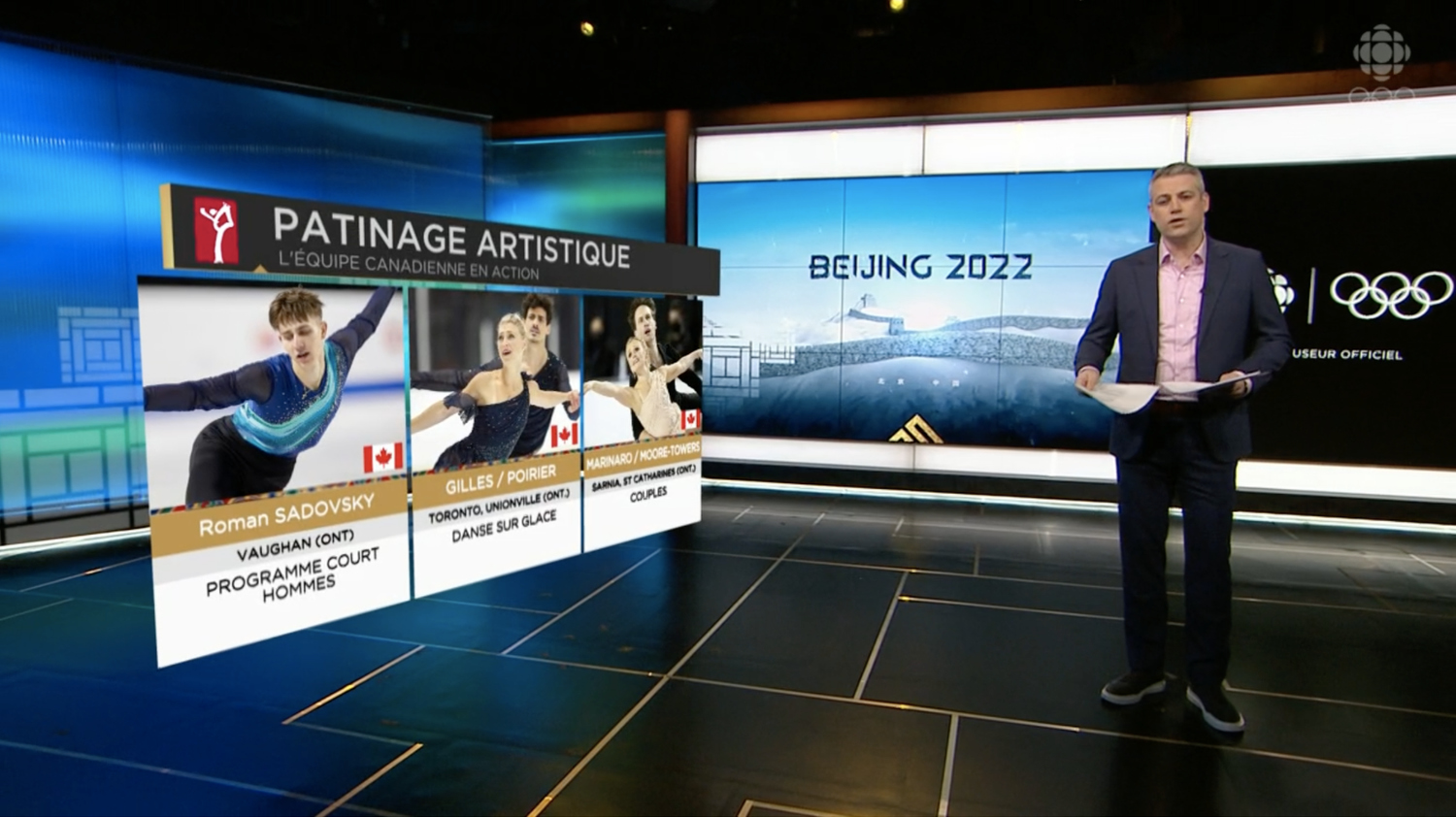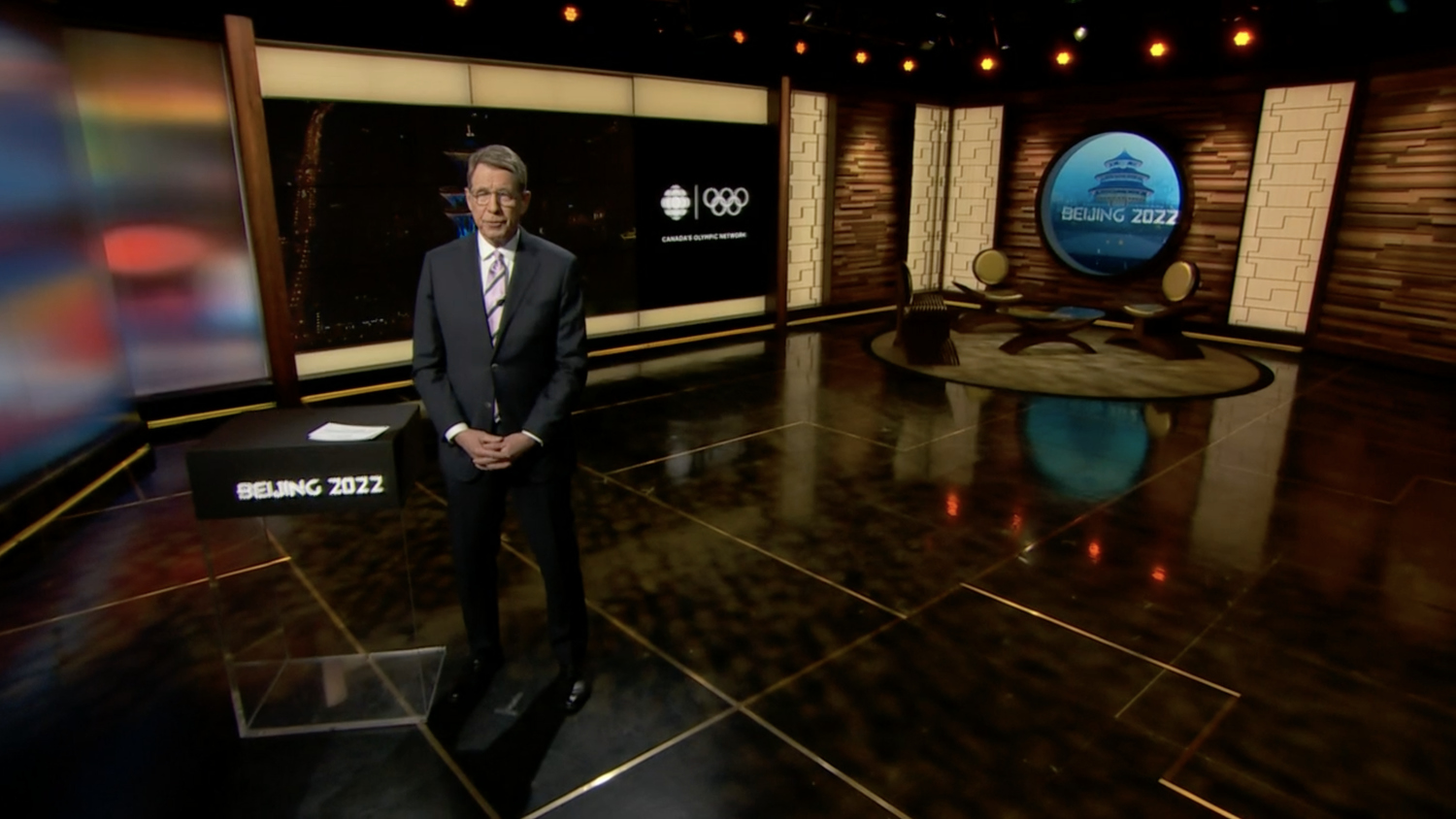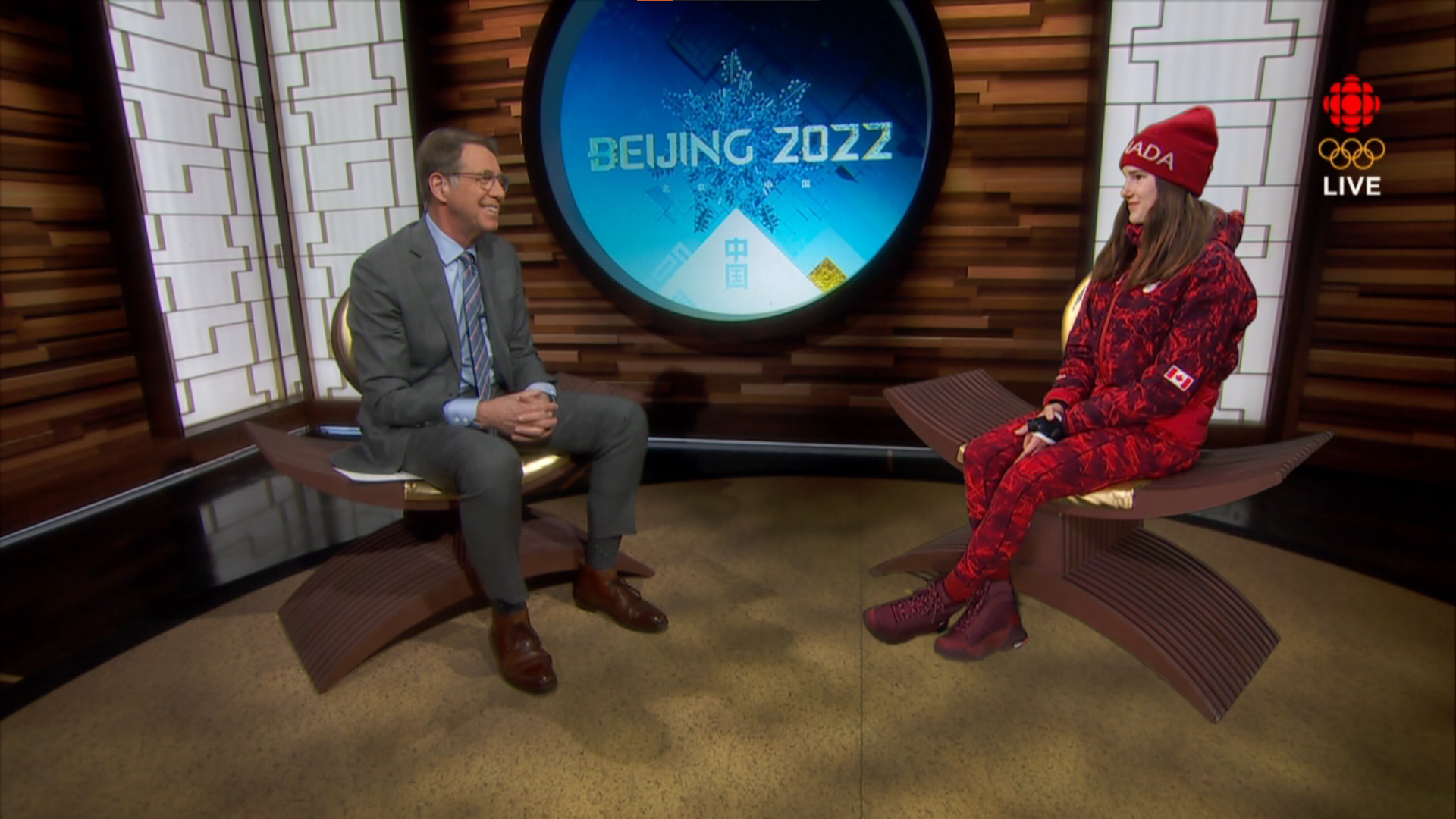CBC/Radio-Canada mixes tradition with technology for Beijing Olympics

Subscribe to NCS for the latest news, project case studies and product announcements in broadcast technology, creative design and engineering delivered to your inbox.
For its coverage of the 2022 Winter Olympics in Beijing, CBC and Radio-Canada are again relying on a remote production model with broadcasts originating from Canada.
In Toronto and Montreal, sets have been created for English and French language coverage with a near-identical presentation in terms of set and graphics.
This follows a long precedent for the Canadian public broadcaster, which has, for many, Olympics had two near-identical spaces inside the IBC or other temporary broadcast structures.


The overall set design includes a variety of motifs that closely relate to the motion graphics package with a variety of golden accents and grids. Gently back-lit panels, meanwhile, are reminiscent of Chinese screens (屏风) with stacked wood adding plenty of warmth.
While other broadcasters, like NBC and BBC, have opted for a ski lodge setting, CBC’s design feels more at home in traditional Chinese culture, as if host Scott Russell is visiting a historical site in Beijing.
Technology-wise, the sets include a circular display often used for branding. A larger 3×3 video wall is also present for topical imagery and teases.
The set also includes augmented reality for previewing events and athlete profiles along with remote interviews.

Scott Russell interviews Megan Oldham via virtual teleportation.

Martin Labrosse interviews Charles Hamelin and Marie-Philip Poulin via virtual teleportation.
Athletes can be keyed in from the IBC and appear directly in the studio with the host, even appearing to sit on the same furniture. This effect is powered by Vizrt’s XR Studio solution.

Given the importance of the Winter Olympics in Canadian sport, CBC has gone above and beyond its Tokyo coverage adding a second set just for hockey.
This set, located in Studio 41 at CBC’s Toronto broadcast facility, expands these design motifs with additional display technology and a large desk for analysis.
CBC and Radio-Canada have also utilized existing studio spaces to allow for around-the-clock Olympic coverage. CBC, for example, is again using part of its atrium.
Subscribe to NCS for the latest news, project case studies and product announcements in broadcast technology, creative design and engineering delivered to your inbox.





tags
2022 Winter Olympics, Canadian Broadcasting Centre, CBC, CBC Sport, Maison de Radio-Canada, montreal, olympics tv studio, radio-canada, toronto
categories
Augmented Reality, Virtual Production and Virtual Sets, Featured, Olympics, Sports Broadcasting & Production